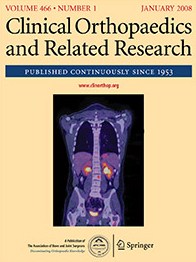
ARTHROPLASTY
Patient-specific instrumentation provides no benefit in unicompartmental knee arthroplasty
Clin Orthop Relat Res. 2016 Jan;474(1):60-860 patients undergoing primary medial unicompartmental knee arthroplasty were randomized to undergo surgery either with the use of patient-specific instrumentation or conventional instrumentation. The purpose of this randomized controlled trial was to determine if patient-specific instrumentation benefited surgical outcomes, including implant positioning, functional outcomes, and 3-dimensional gait parameters at 1 year postoperatively. The results displayed no significant differences between the two surgical methods in terms of spatiotemporal and kinematic gait parameters at 1 year, functional and quality of life outcomes at 3 months and 1 year, or in lower limb alignment and implant positioning in the radiographic analysis.
Unlock the full ACE Report
You have access to {0} free articles per month.Click below to unlock and view this {1}
Unlock NowCritical appraisals of the latest, high-impact randomized controlled trials and systematic reviews in orthopaedics
Access to OrthoEvidence podcast content, including collaborations with the Journal of Bone and Joint Surgery, interviews with internationally recognized surgeons, and roundtable discussions on orthopaedic news and topics
Subscription to The Pulse, a twice-weekly evidence-based newsletter designed to help you make better clinical decisions
Exclusive access to original content articles, including in-house systematic reviews, and articles on health research methods and hot orthopaedic topics
Or upgrade today and gain access to all OrthoEvidence content for just $1.99 per week.
Already have an account? Log in


Subscribe to "The Pulse"
Evidence-Based Orthopaedics direct to your inbox.
{0} of {1} free articles
Become an OrthoEvidence Premium Member. Expand your perspective with high-quality evidence.
Upgrade Now












































































